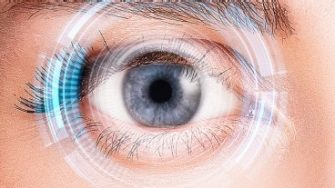
You et al., (2018) RNA-Seq analysis and comparison of corneal epithelium in keratoconus and myopia patients. Sci Rep. 8, 389.
The cornea is a layered, curved clear tissue at the front of the eye and is critical for light to reach the back of the eye and give good sharp vision. Keratoconus (KC) is a relatively common degeneration of the cornea that mostly affects younger people.
This progressive condition leads to gradual loss of corneal transparency, thinning and shape changes; this affects vision and quality of life. If the cornea becomes too thin and misshapen, corneal graft surgery is required to restore corneal function and vision.
In KC, the corneal epithelium and the underlying thick collagen layer and cells (stroma and keratocytes) are most affected. Why the KC cornea degenerates is complex and not well understood but involves interactions of environmental and genetic factors.
We examined changes in genes in the corneal epithelium layer in KC compared to controls. RNAseq analysis was used to examine a global range of genes within tissues. Our analysis of KC epithelium showed significant changes for genes involved in communication and junctions between epithelium, and in cell signalling.
Two unique genes showed significant down-regulation in KC - Notch1 and PLLP, with associated significant decreased protein levels in KC epithelium.
What do these genes do? They are important is corneal epithelium to maintain normal shape and function, in epithelial wound healing and signalling between epithelial cells. Future studies are now needed to confirm the functional role of these proteins in human corneal epithelium and in KC.
View the original paper here
